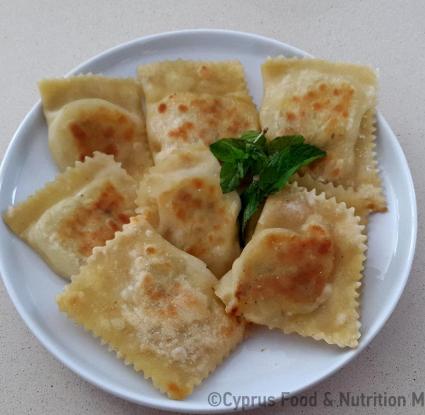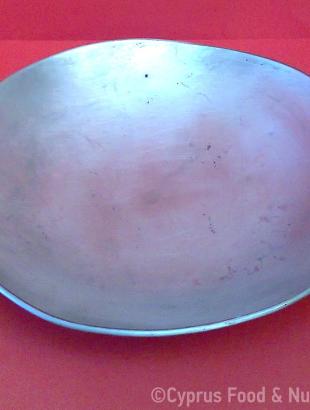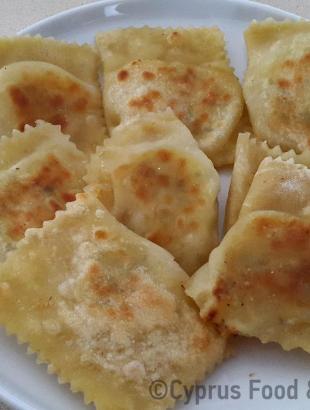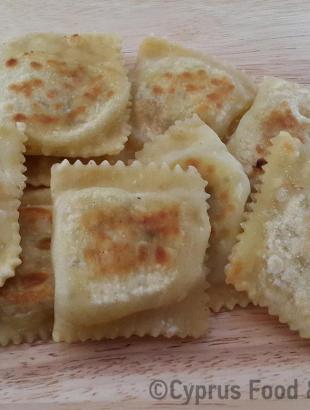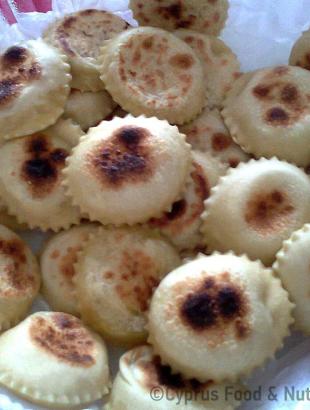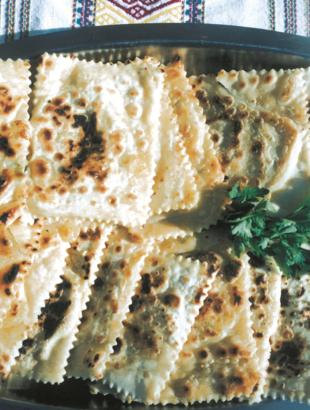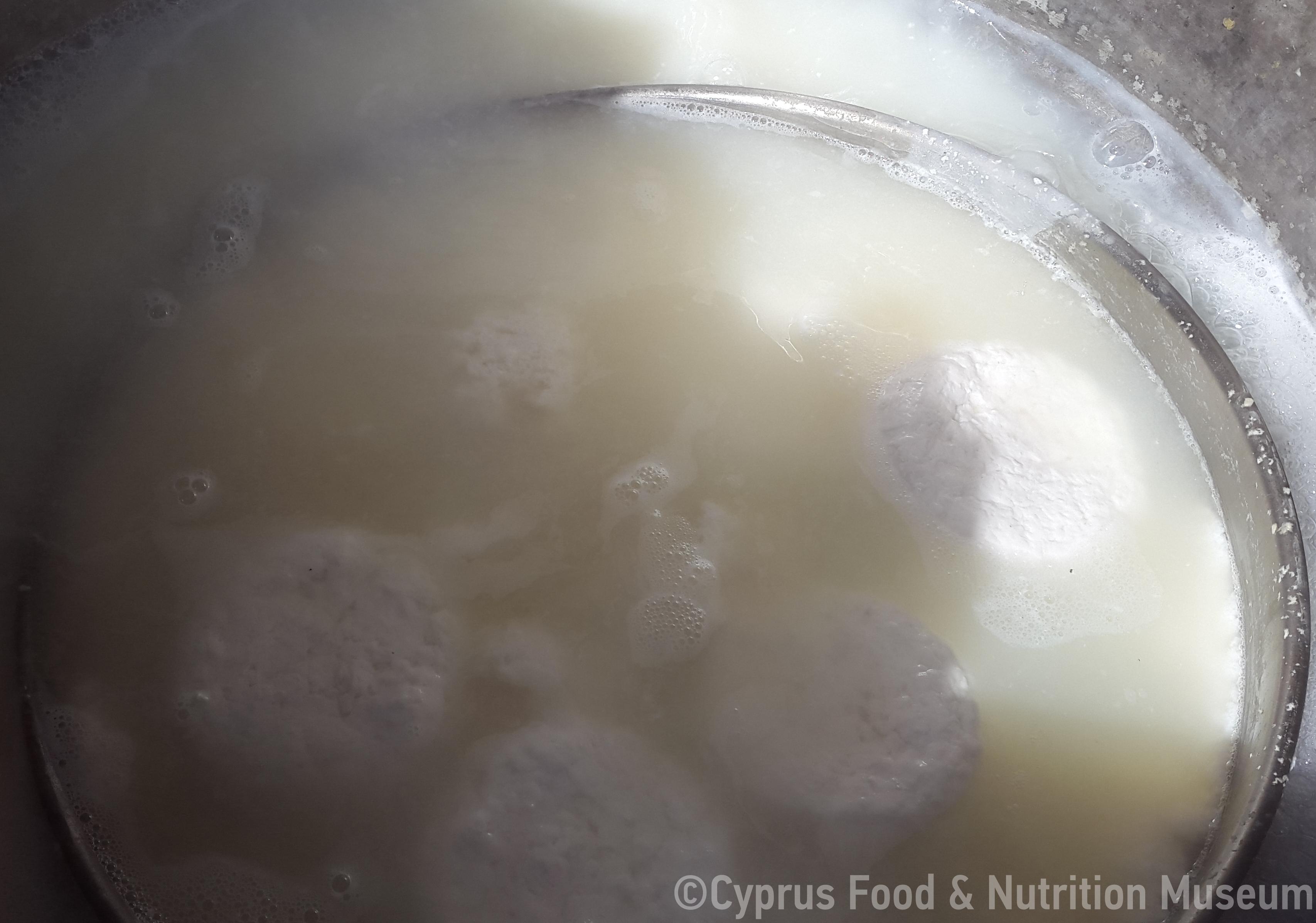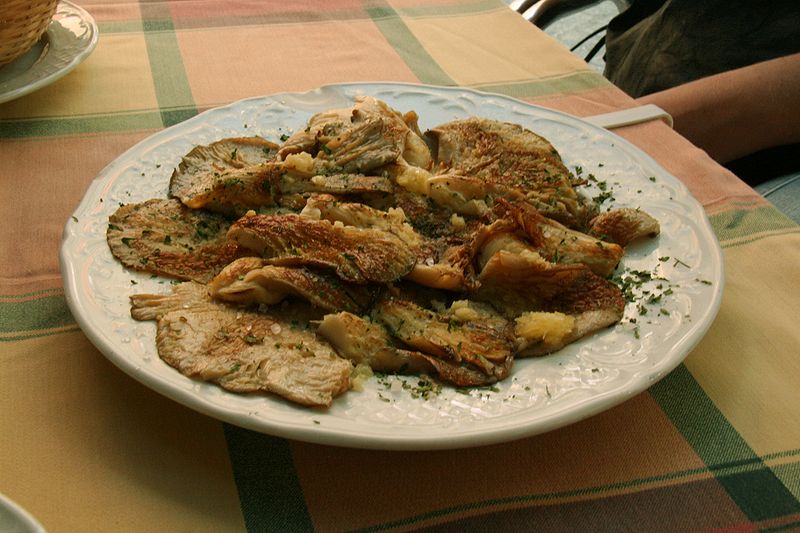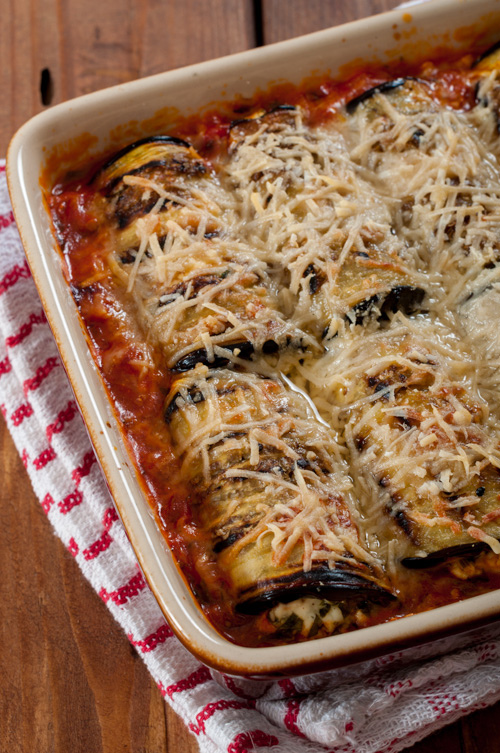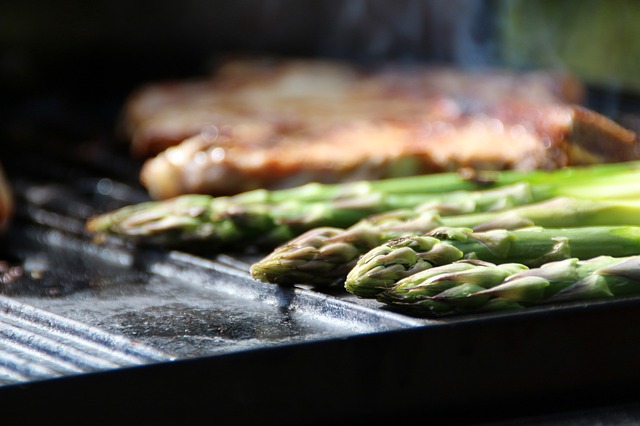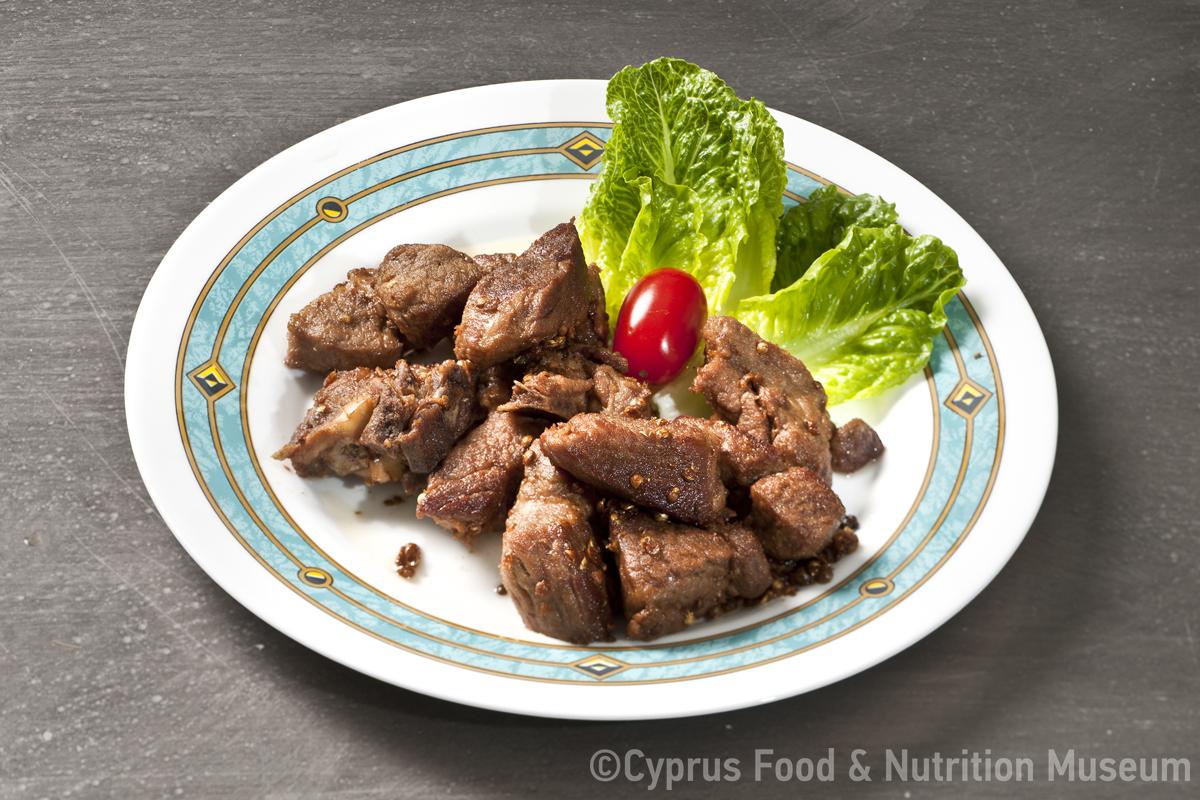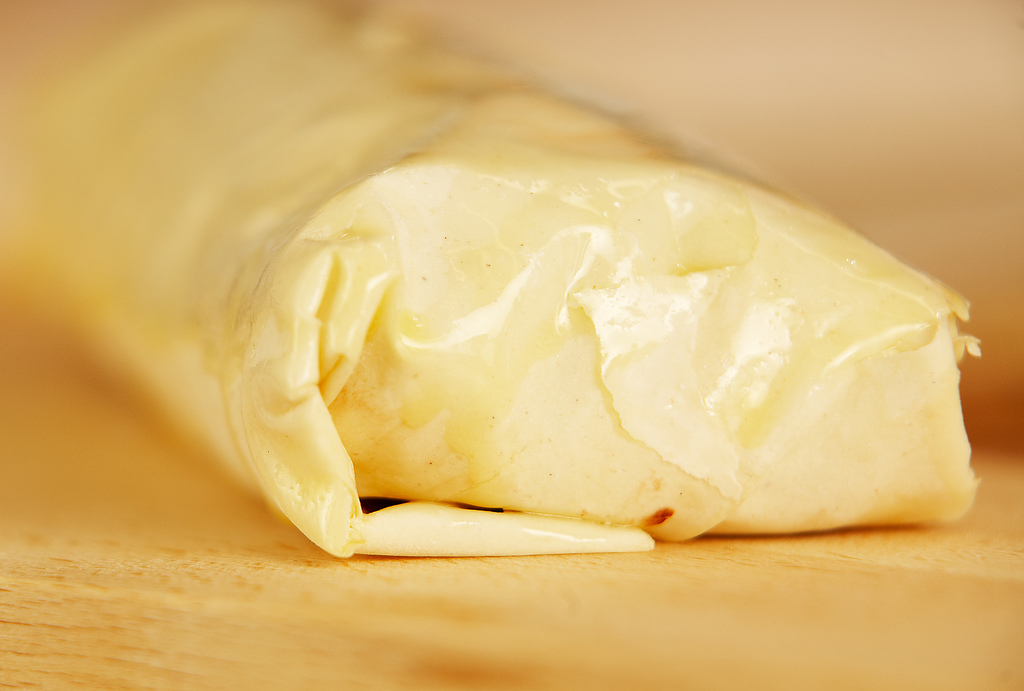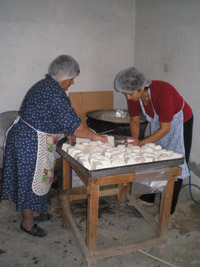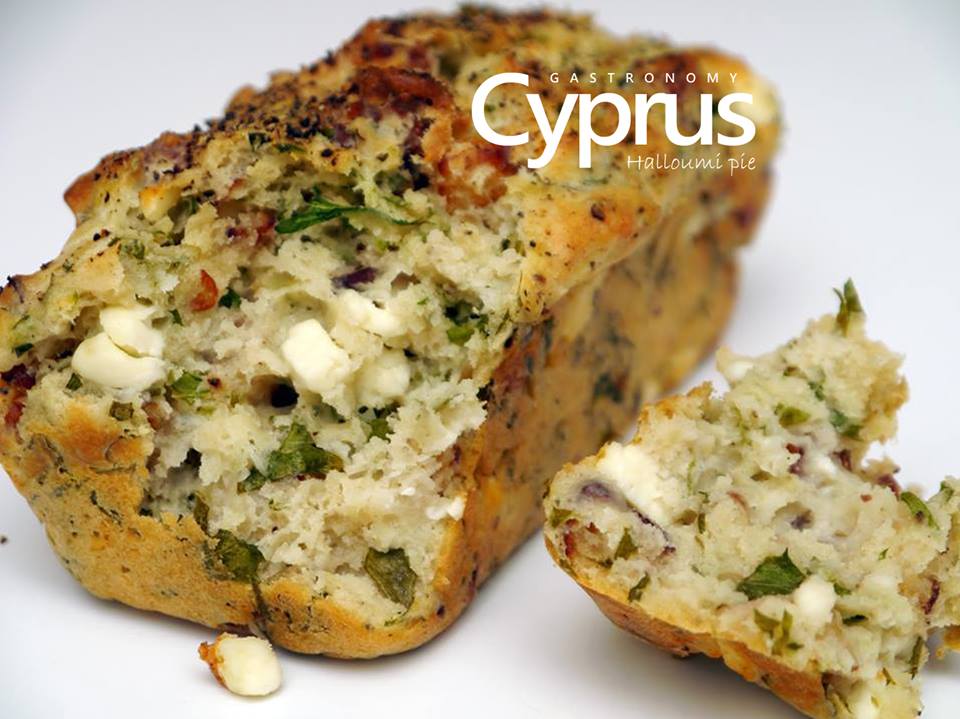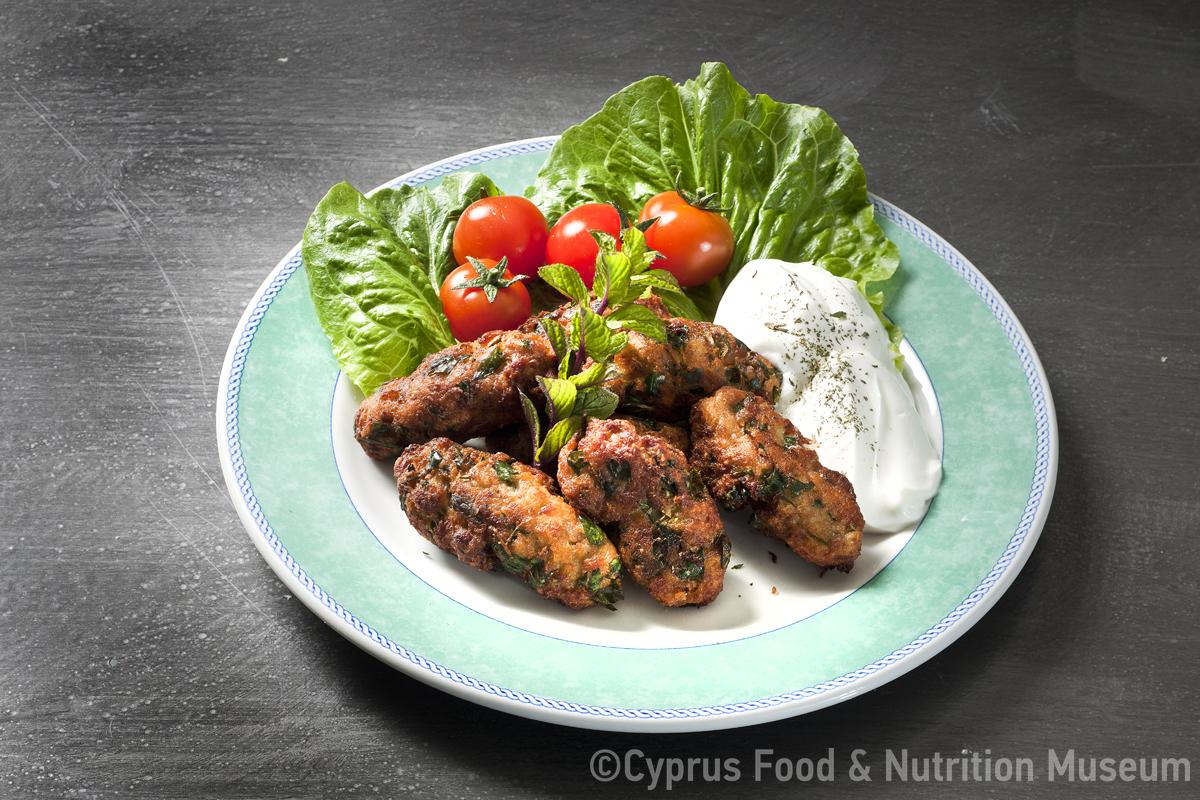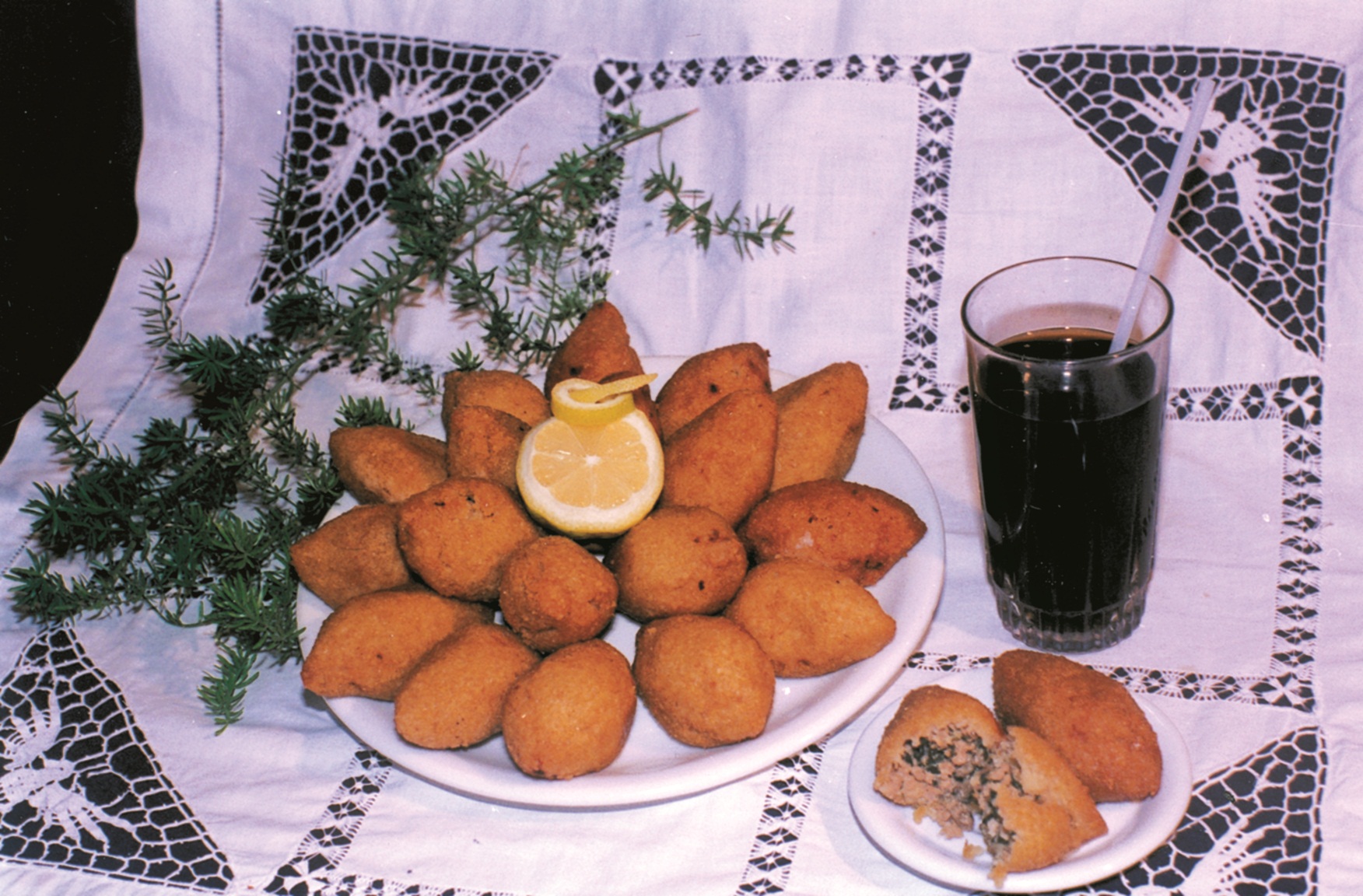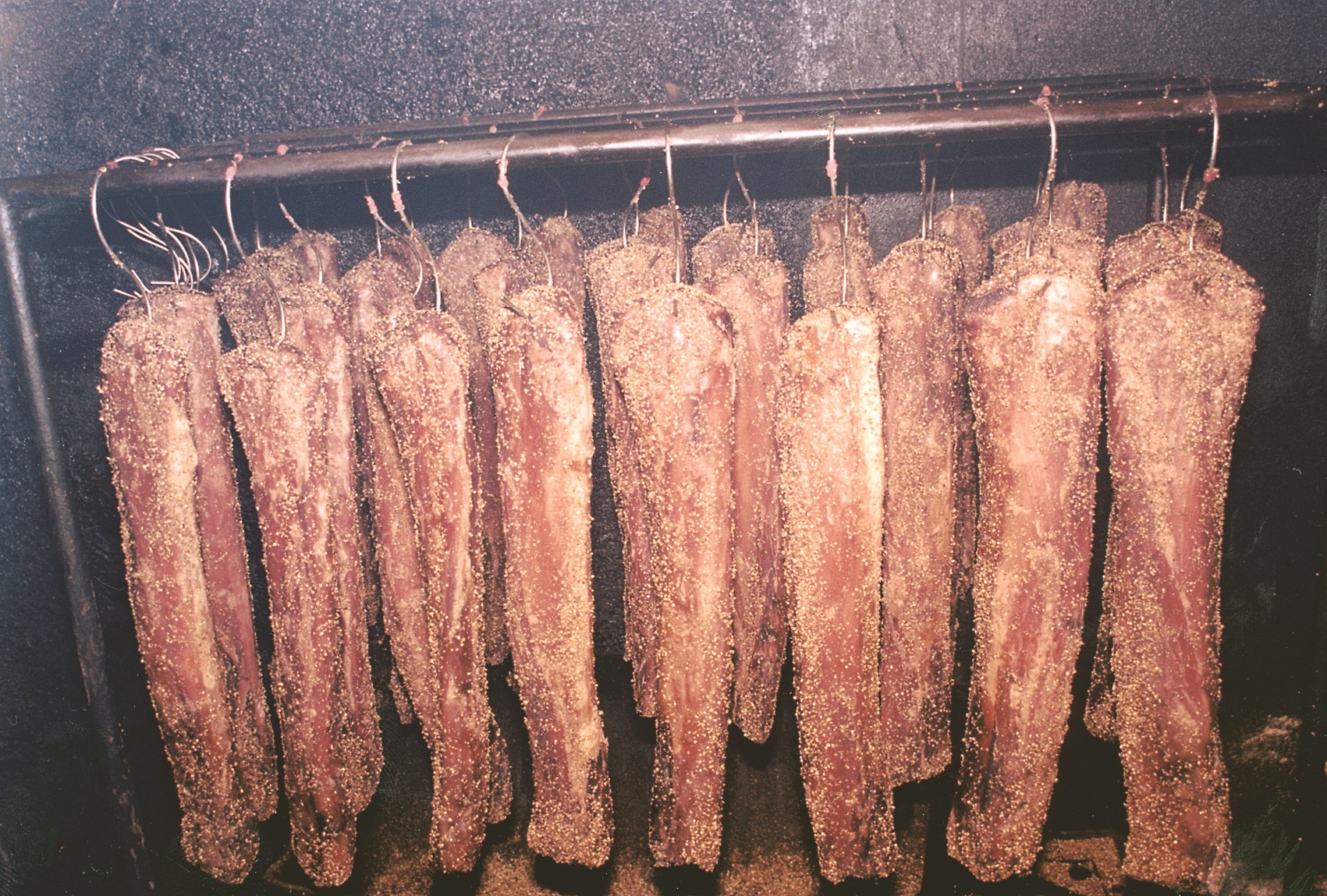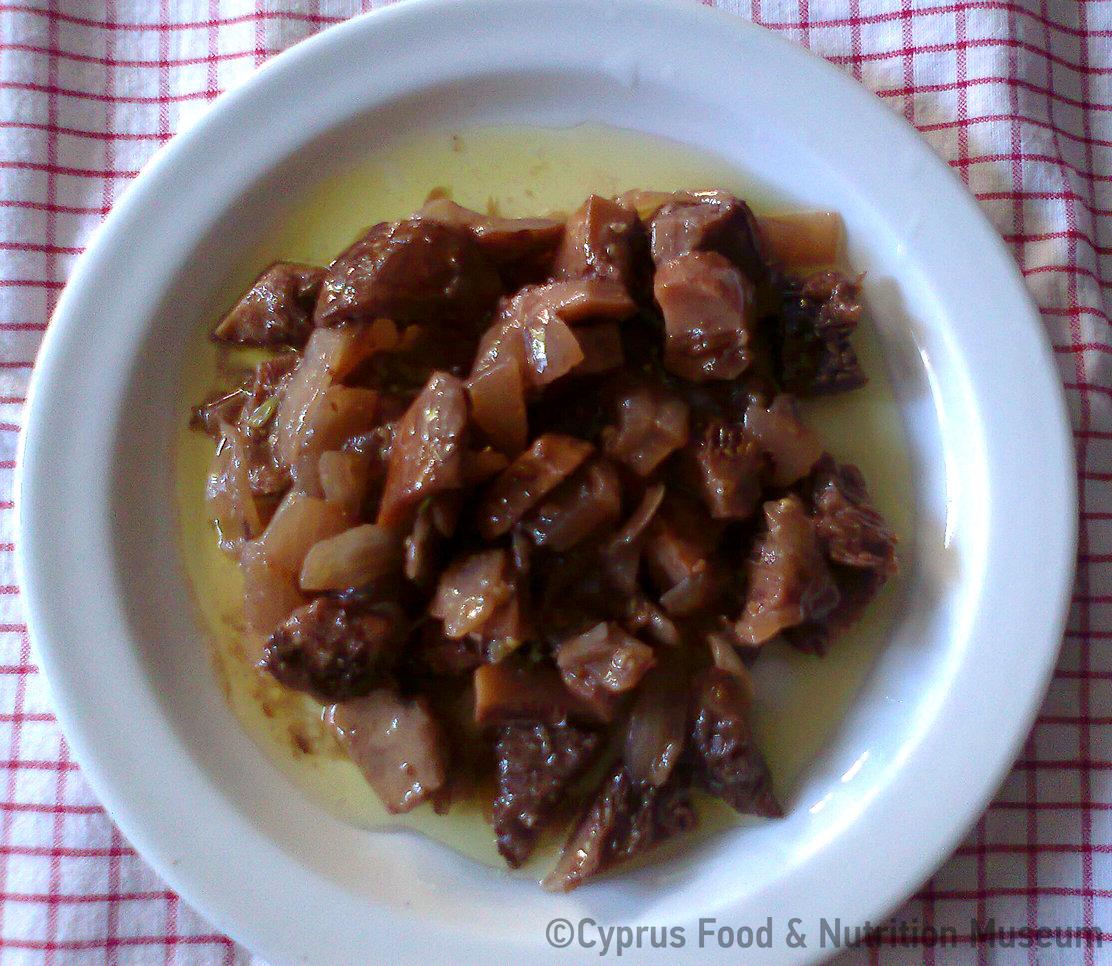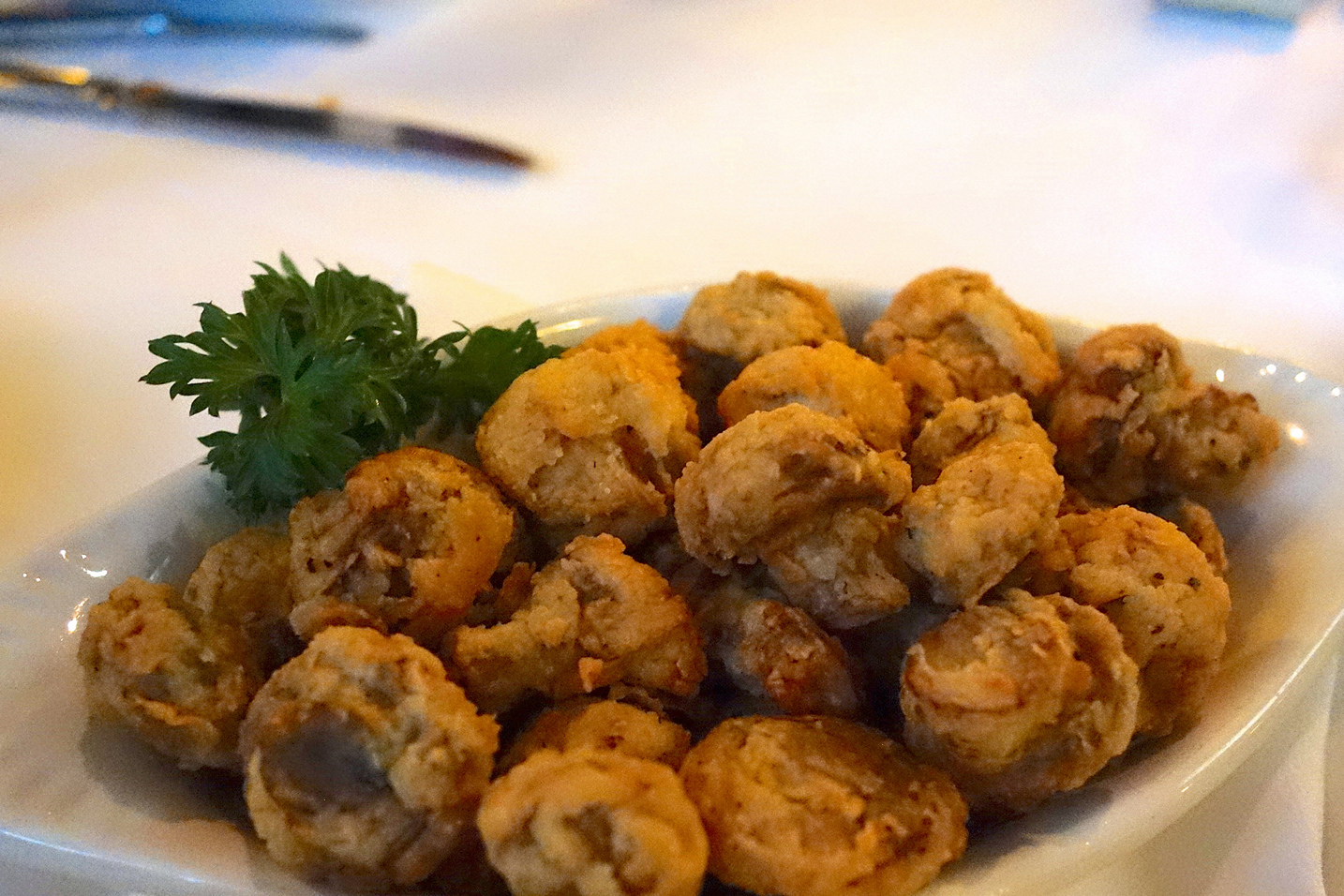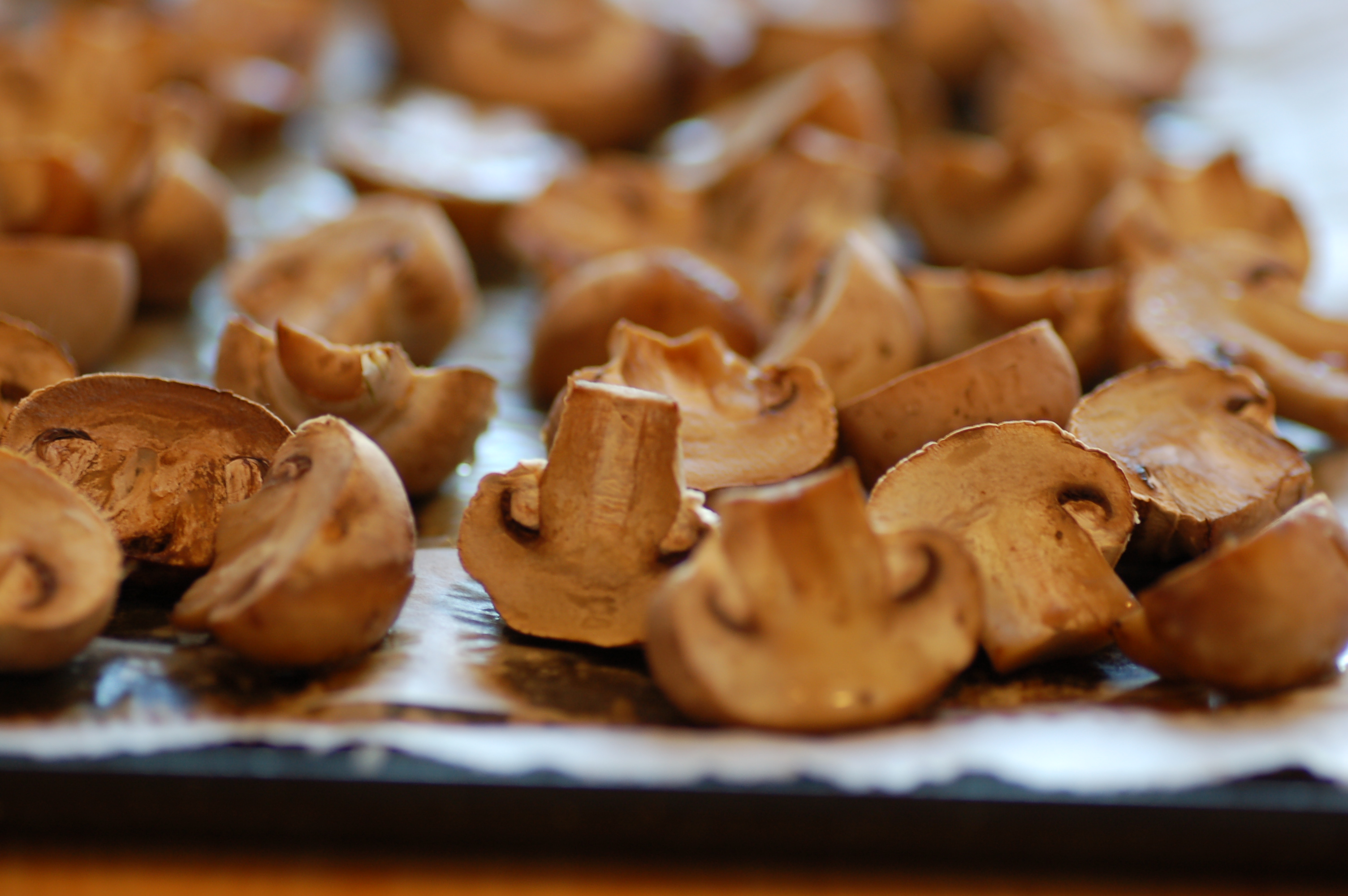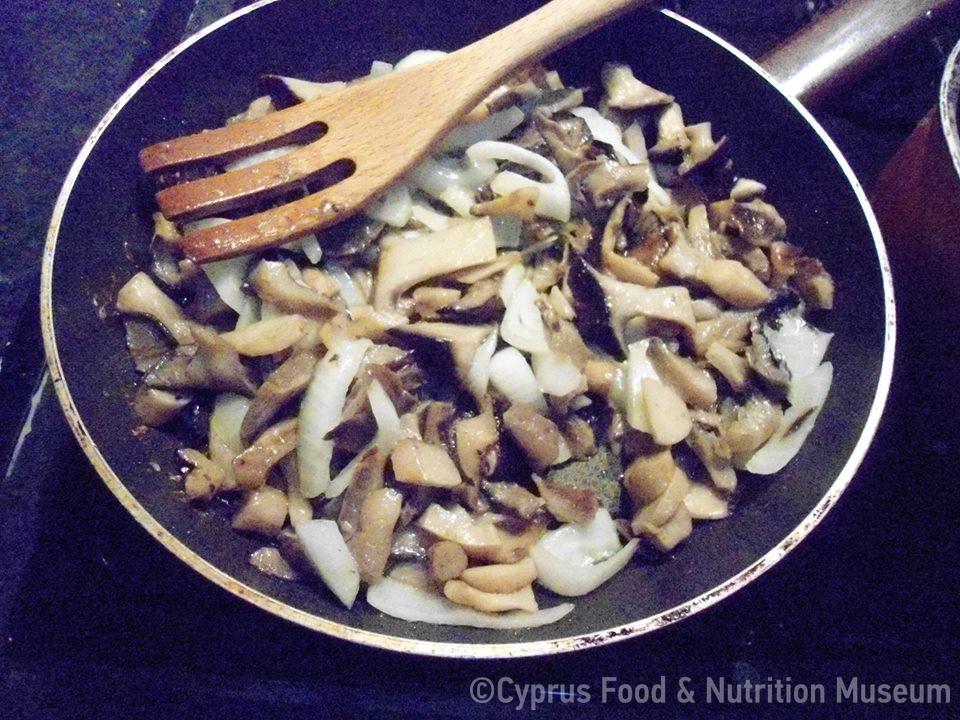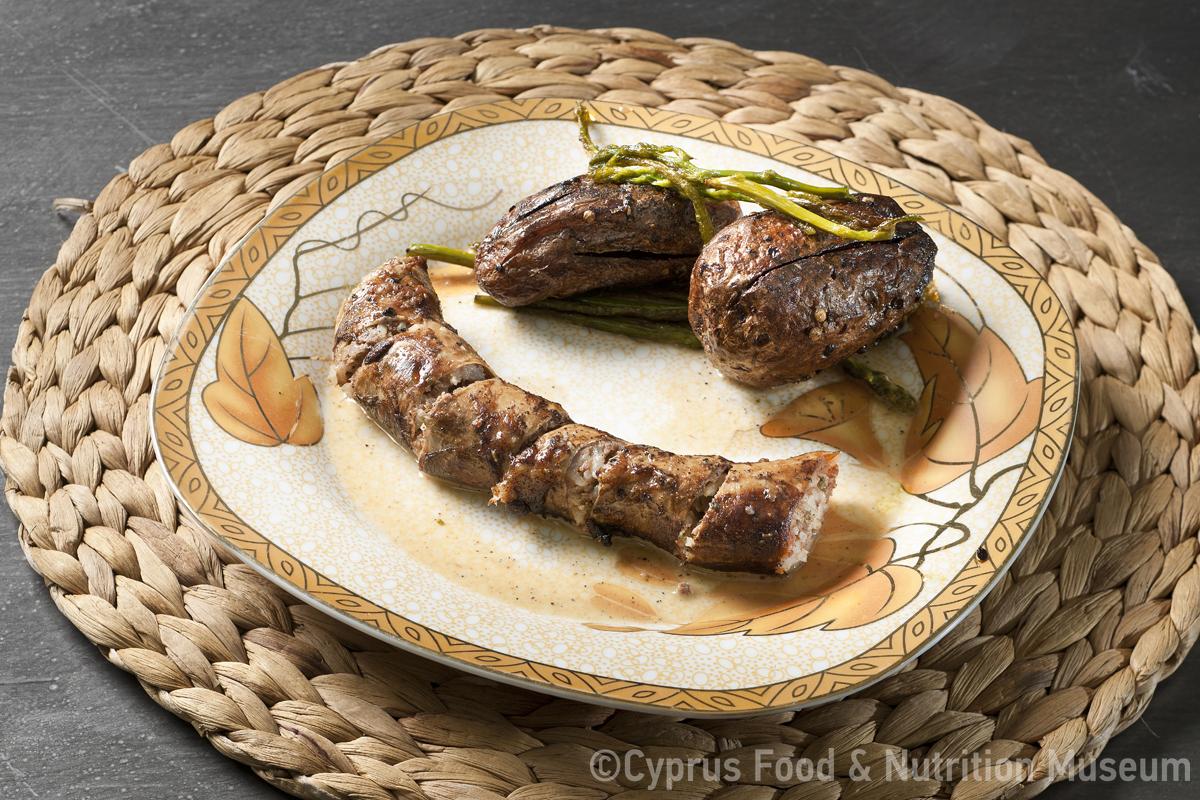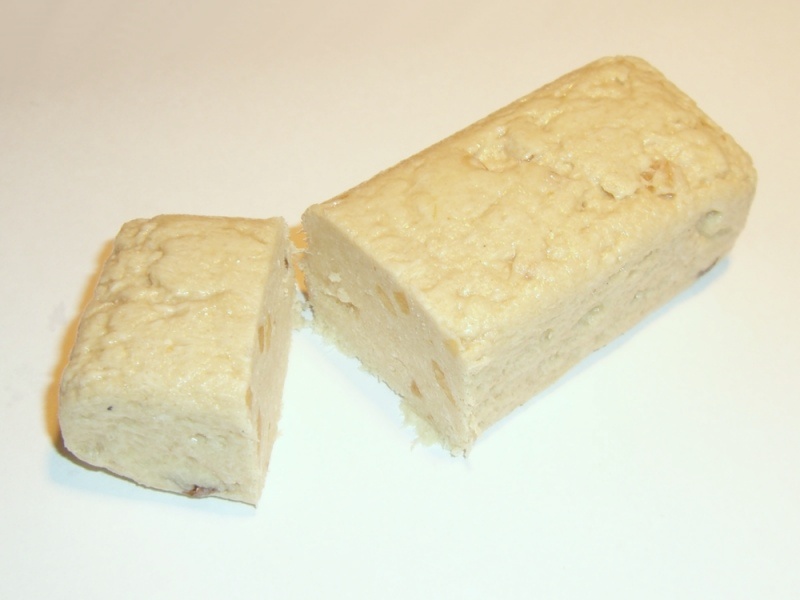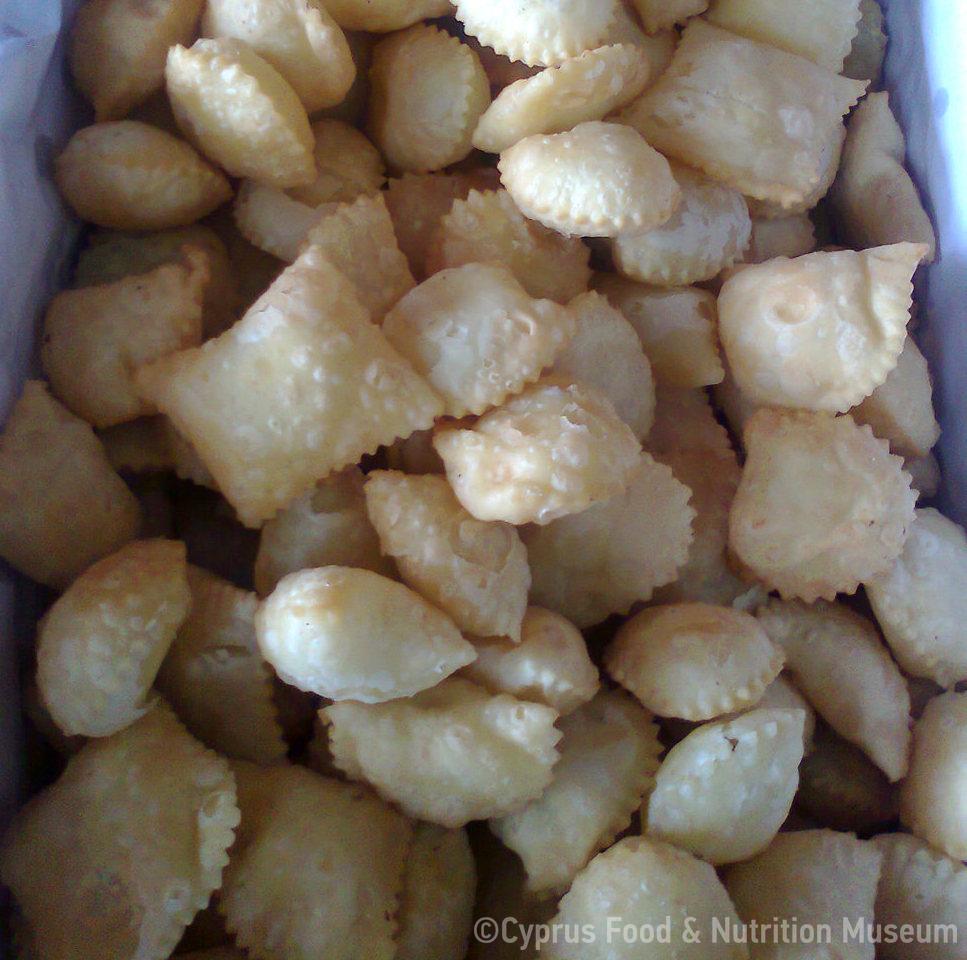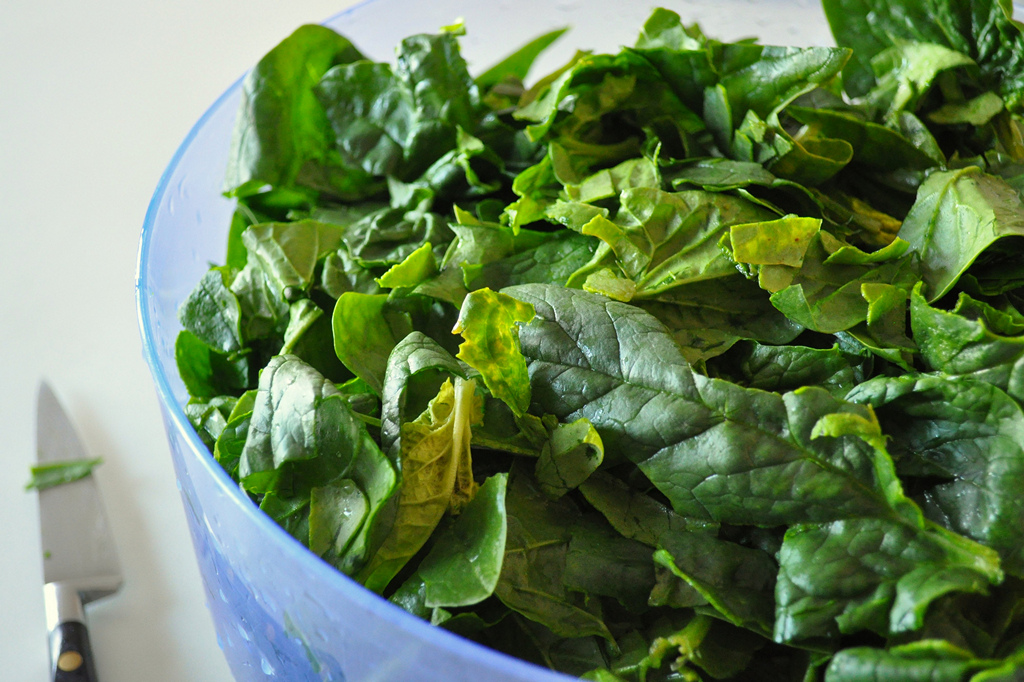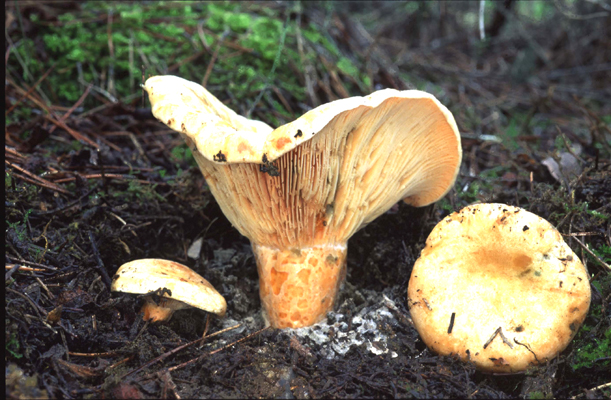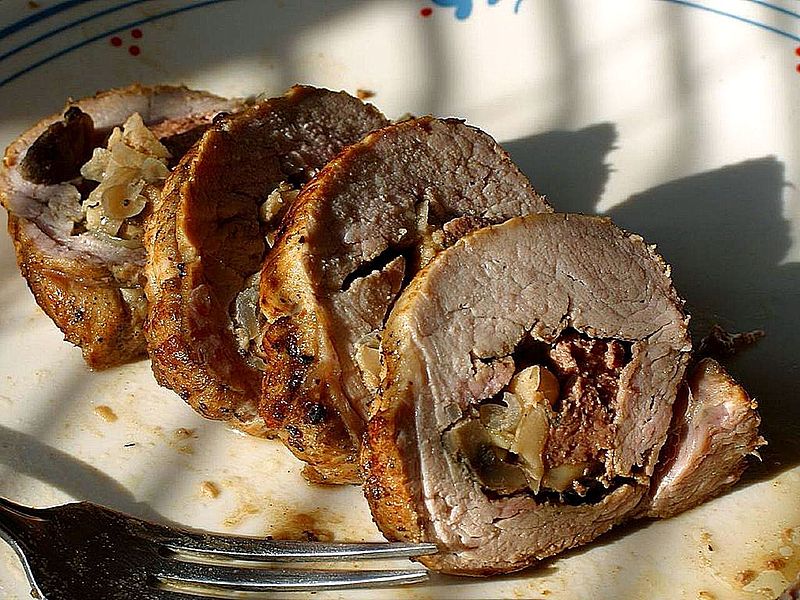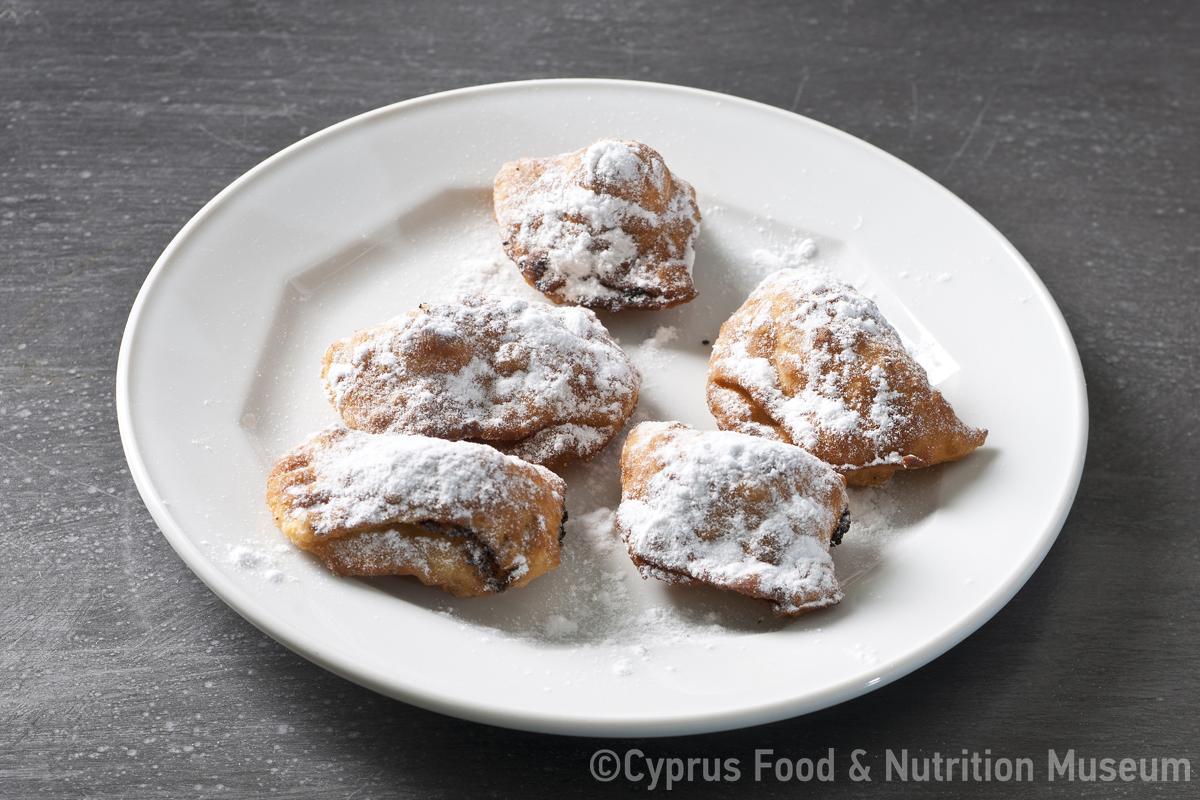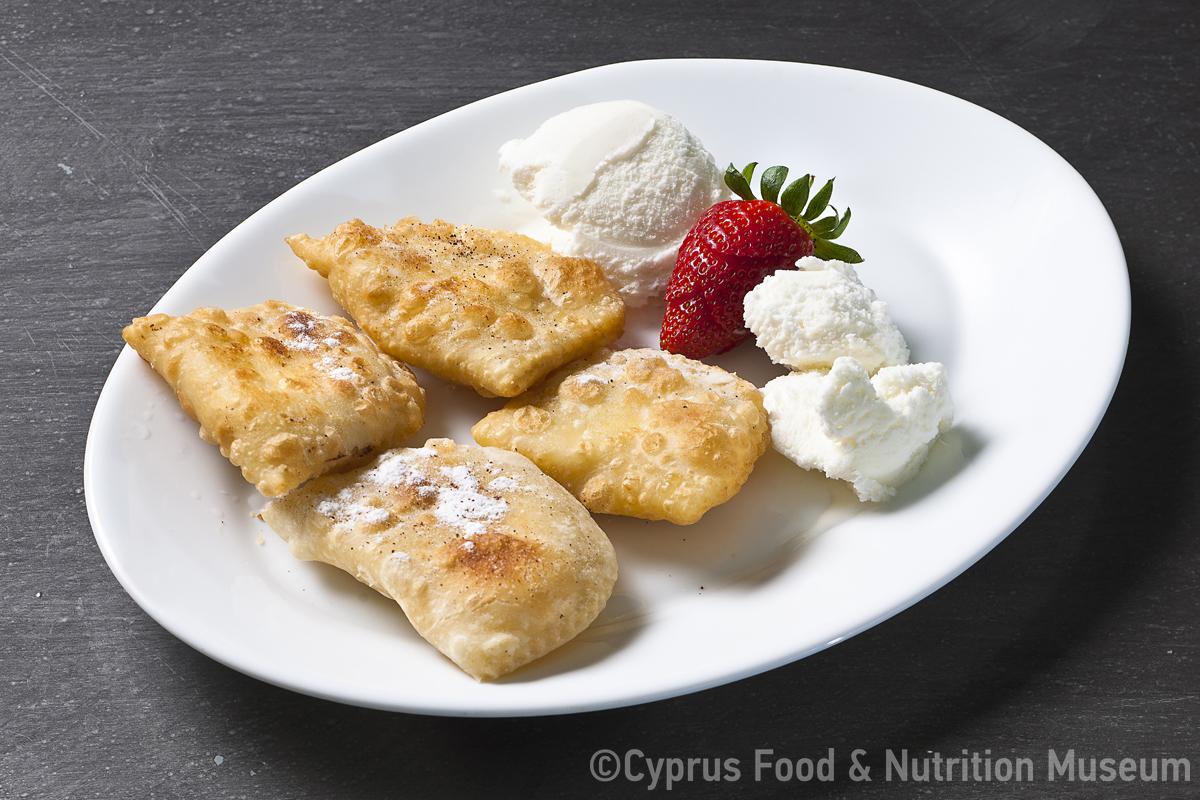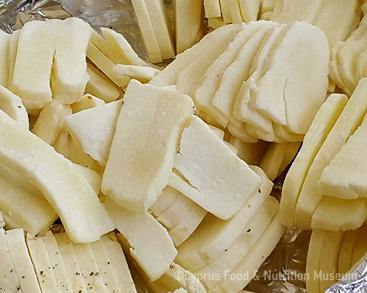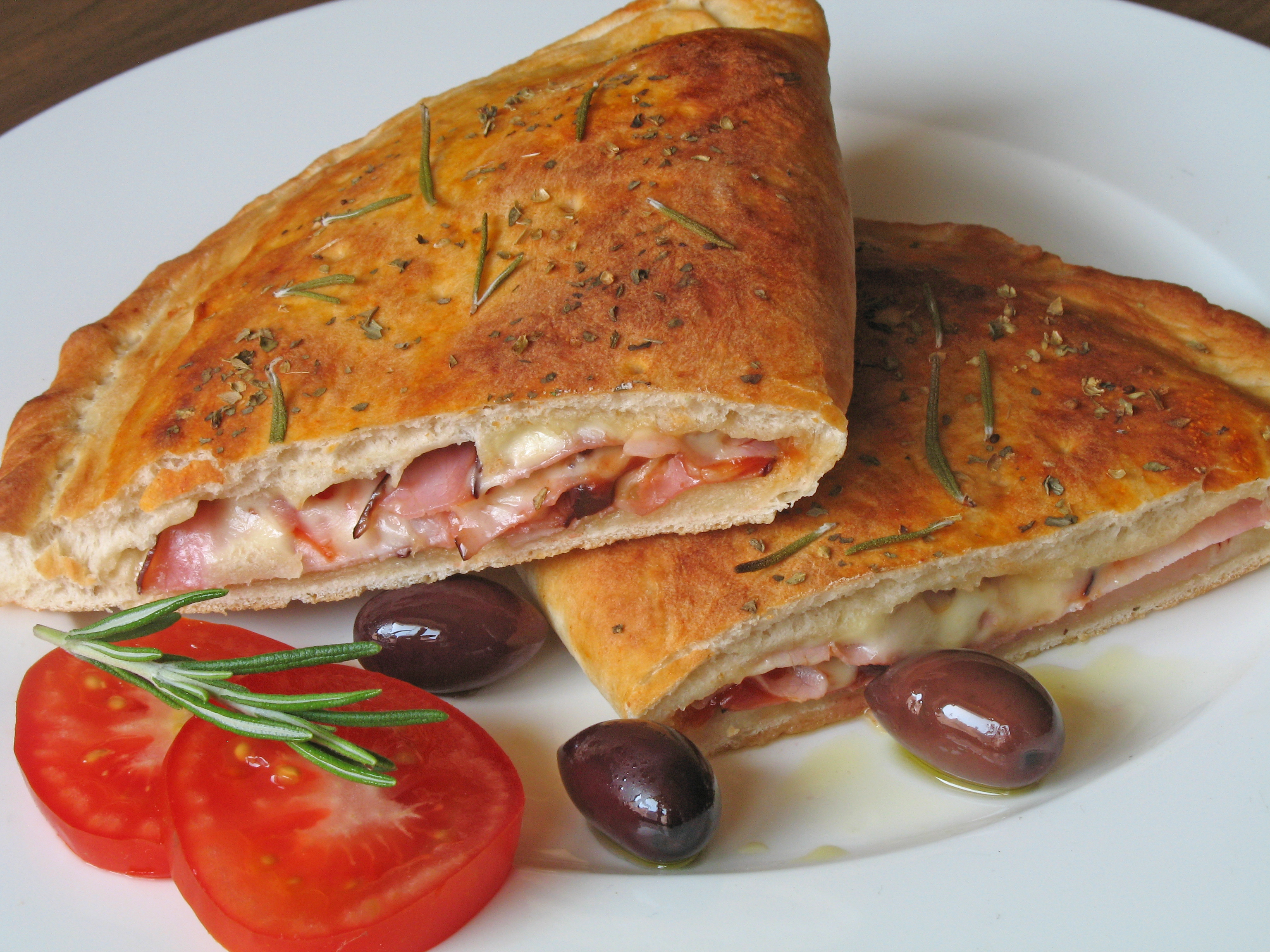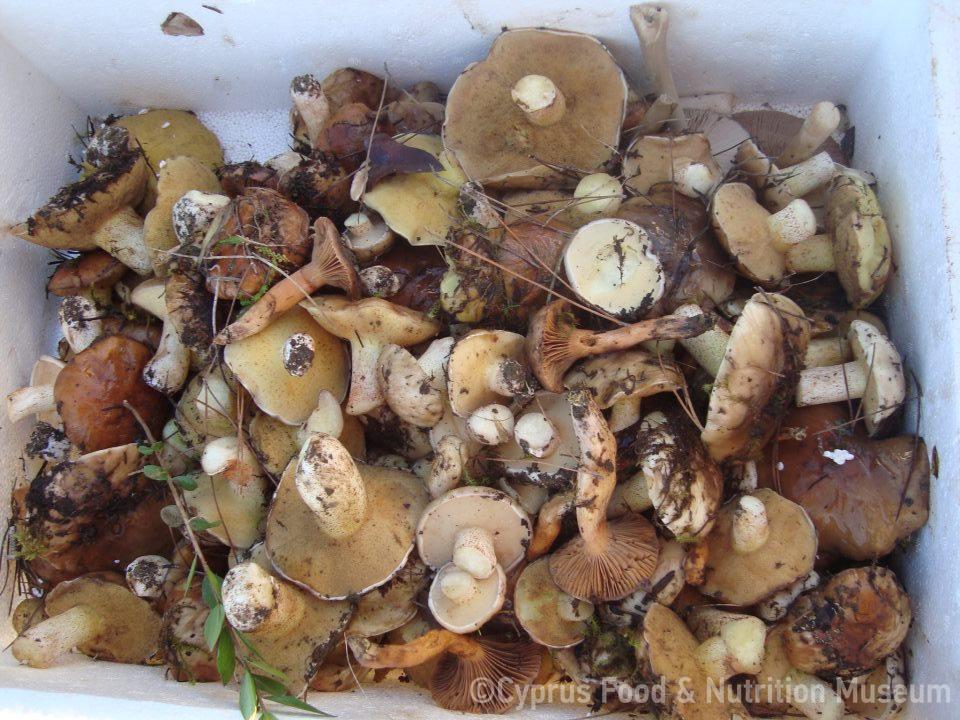A wide variety of pourekia can be baked on satži, depending on their filling which may contain halloumi, anari, minced meat, greens, mushrooms, pumpkin or bulgur. Pourekia with halloumi cooked on satži were also known as hellibouri in the Kyrenia province.
Name - Recipe
Μπουρέκια με γέμιση από χαλλούμι στη σάτζη. Pourekia filled with halloumi cheese, baked on a traditional dish - satži. Satži=cookware, clay shallow tray with two handles or metal plate on which they baked pourekia (Kypri - Protopapa 2003, 249-250).
Pourekia with halloumi were called helliboure or hellibouri or hellibourei, hillibouri or halliboure in many villages, such as Pyroi, Agios Epiktitos, Elia and Koutsoventi of the Kyrenia province (Kypri - Protopapa 2003, 248-249).
In the village of Dikomo they are referred to as helliburi. According to George Mavrokordatos, the name must come from the halloum bourek, which means poureki with halloumi (Mavrokordatos 1987, 307).
For the dough:
4 cups flour
1 pinch of salt
6 tbsp olive oil
lukewarm water (as much as needed)
For the filling:
1 kg onions
1 halloumi cheese, grated
½ cup olive oil
dry spearmint
pepper
Grate the halloumi. In a bowl, sift the flour with the salt, add the oil and rub with your fingertips. Knead, adding as much lukewarm water as needed to form a soft dough. Leave the dough aside to rest for ½ hour. Peel the onions and dip them in hot water for 10 minutes. Remove and cut the onions into slices. In a pan, sauté the onions in olive oil with a covered lid. You may add some water to soften them. Remove from heat and leave them to cool down. Once cool, add the grated halloumi, spearmint and a little pepper and mix well. Roll out half of the dough into a thin pastry sheet and place a tablespoon of filling at intervals. Roll out the rest of the dough into a thin pastry sheet and place on top of the first sheet. Cut each of the pourekia with a pastry wheel or with a knife into squares and press the edges of each square if needed to seal the filling. Bake the pourekia in slow heat over a preheated satži or in a non-stick pan without oil (Ministry of Agriculture 2010, Cypriot traditional preparations, 44).
Sautéing.
Baking over satži or in a non-stick pan
Hellibouri were prepared in the province of Kyrenia (Ministry of Agriculture 2010, Cypriot traditional preparations, 44).
Additional information and bibliography
A wide variety of pourekia is baked over satži, depending on their filling. The filling may contain halloumi, anari, minced meat, greens, mushrooms, pumpkin or bulgur wheat (Kypri - Protopapa 2003, 248).
Usually, pourekia with halloumi was a savoury preparation, but in some areas, like Peristeronopigi, sugar was added to make them sweet (Kypri - Protopapa 2003, 249).
The traditional way of baking pourekia over satži is still used until today in many villages in Cyprus. Satži is a slightly concave vessel, placed on the fire with the cavity side facing either upwards or downwards. Baking over satži is simple, without necessarily having to use oil for baking. (Kypri - Protopapa 2003, 244).
Kypri Th. - Protopapa K. A. (2003), traditional baking in Cyprus. Its use and importance in customary life, publications of the Centre for Scientific Research, XVIII, Nicosia.
Mavrokordatos G. (1987), Dikomo. A contribution to the history and folklore of the village, Nicosia.
Ministry of Agriculture, Natural Resources and Environment, Department of Agriculture (2010), Cypriot traditional preparations, Press and Information Office, Nicosia.
Varvara Yangou, Eleni Christou, Argyro Xenophontos

